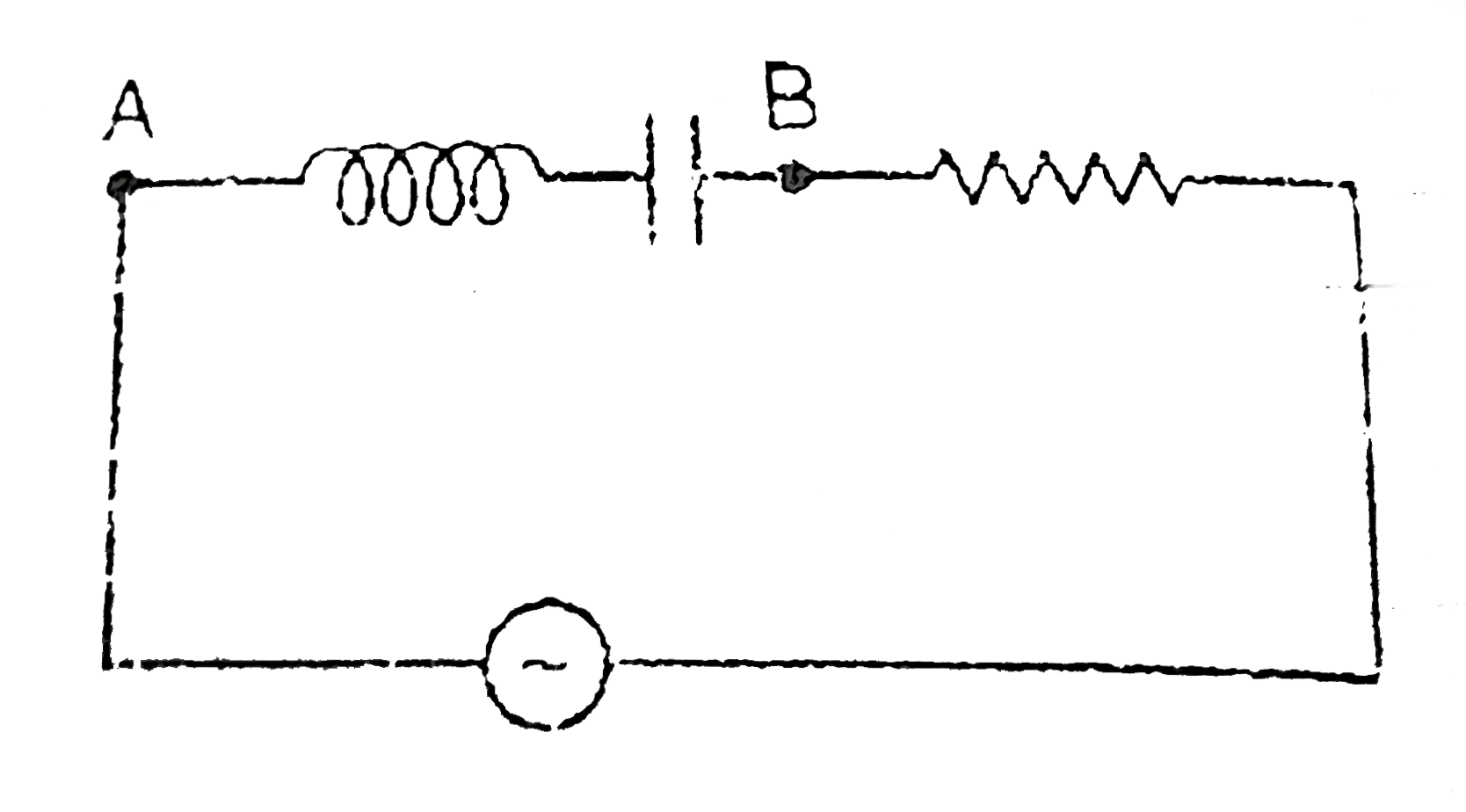An ac voltage is represented by
E=220√2cos(50π)t
How many times will the current become zero in 1 s?
(A) 50 times
(B) 100 times
(C) 30 times
(D) 25 times
The correct Answer is:A
To solve the problem, we need to determine how many times the current becomes zero in one second, given the AC voltage equation:
E=220√2cos(50πt)
Step 1: Identify the angular frequency (ω)
The equation is in the form of E=E0cos(ωt), where ω is the angular frequency. From the given equation, we can see that:
ω=50π
Step 2: Calculate the frequency (f)
The angular frequency ω is related to the frequency f by the formula:
ω=2πf
Substituting the value of ω:
50π=2πf
Step 3: Solve for frequency (f)
We can divide both sides by 2π:
f=50π2π=25Hz
Step 4: Determine the number of cycles in one second
The frequency f indicates the number of cycles per second. Since f=25Hz, this means there are 25 cycles in one second.
Step 5: Calculate how many times the current becomes zero
In each cycle of an AC waveform, the current becomes zero twice (once when it goes from positive to negative and once when it goes from negative to positive). Therefore, in 25 cycles, the current will become zero:
Total zeros in 1 second=25cycles×2zeros/cycle=50
Conclusion
Thus, the current will become zero 50 times in one second.
Final Answer
The current becomes zero 50 times in 1 second.
---
The equation is in the form of E=E0cos(ωt), where ω is the angular frequency. From the given equation, we can see that:
The angular frequency ω is related to the frequency f by the formula:
We can divide both sides by 2π:
The frequency f indicates the number of cycles per second. Since f=25Hz, this means there are 25 cycles in one second.
In each cycle of an AC waveform, the current becomes zero twice (once when it goes from positive to negative and once when it goes from negative to positive). Therefore, in 25 cycles, the current will become zero:
Thus, the current will become zero 50 times in one second.
The current becomes zero 50 times in 1 second.
Topper's Solved these Questions
- ALTERNATING CURRENTBOOK - CENGAGE PHYSICS ENGLISHCHAPTER - ALTERNATING CURRENTEXERCISE - Exercises Multiple Correct
5 Videos
- ALTERNATING CURRENTBOOK - CENGAGE PHYSICS ENGLISHCHAPTER - ALTERNATING CURRENTEXERCISE - Exercises Assertion-reasoning
7 Videos
- ALTERNATING CURRENTBOOK - CENGAGE PHYSICS ENGLISHCHAPTER - ALTERNATING CURRENTEXERCISE - Exercises Subjective
15 Videos
- ATOMIC PHYSICSBOOK - CENGAGE PHYSICS ENGLISHCHAPTER - ATOMIC PHYSICSEXERCISE - ddp.4.3
15 Videos
Similar Questions
An Ac voltage is represented by e=220 sin (100π) t volt and is applied over a resistance of 110 ohm. Calculate the heat produced in 7 min.
View SolutionIf the voltage in an ac circuit is reparesented by the equation V=220√2sin(314t−ϕ), calculate
frequency of ac
View SolutionIf the voltage in an ac circuit is reparesented by the equation V=220√2sin(314t−ϕ), calculate
average voltage
View SolutionIf the voltage in an ac circuit is reparesented by the equation V=220√2sin(314t−ϕ), calculate
rms value of the voltage
View SolutionWhen a voltage Vs=200√2sin(100t)V is applied to an ac circuit the current in the circuit is found to be i=2sin[ωt+(π/4)]A. Find the average power consumed in the circuit.
View SolutionWhen a voltage Vs=200√2sin(100t)V is applied to an ac circuit the current in the circuit is found to be i=2sin[ωt+(π/4)]A. Find the average power consumed in the circuit.
View SolutionA particle's velocity v at timet is given by v=2e2tcos(πt3).the least value of t for which the acceleration becomes zero is
View SolutionIf the voltage in an ac circuit is represented by the equation,V=220√2sin(314t−ϕ) V. Calculate
(a) peak and rms.value of the voltage
(b) average voltage
(c) frequency of AC
View SolutionAn AC voltage is given by E = Eo sin 2πt / T
Then , the mean value of volatage calculated over any time interval of T / 2
View SolutionAn inductor (L=1100πH), a capacitor (C=1500πF) and a resistance (3Ω) is connected in series with an AC voltage source as shown in the figure. The voltage of the AC source is given as V=10cos(100πt) volt. What will be the potential difference between A and B ?

View Solution
